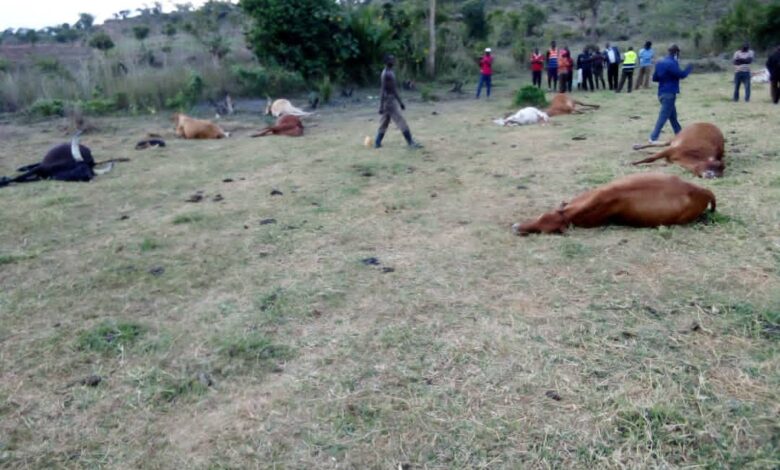Agric board sheds light on 15 cows that died in Kirehe

The cows that died this past weekend in Mpanga Sector, Kirehe District may have been killed by young sorghum plants which they ate from a plantation, according to preliminary findings by Rwanda Agriculture and Animal Resource Development Board (RAB).
The cows belonging to one Leoncia Mukansonera had on Saturday, November 13 strayed into the sorghum plantation on a neighbours farm and died a few hours later.
Speaking to The New Times on Monday, Fabrice Ndayisenga, the head of department, Animal Resources Research and Technology Transfer, he said that the cows might have been killed by consuming young sorghum plants containing nitrate chemicals.
Officials said that young sorghum crops with less than 50 centimetres have a lot of nitrate chemical that can kill ruminants such as goats, sheep and cows if they consume them in large quantities.
According to preliminary findings by RAB, the sorghum was planted on September 20 meaning the plant were still young and contained a lot of nitrate poisoning.
He explained chemical fertilizers penetrating into such young crops also contain chemicals.
“Before growing sorghum, tomatoes had been grown on the farm using chemical fertilizers which permeate into young crops as they grow. These young sorghum crops were rich with such nitrate poisoning,” he said, warning farmers to avoid feeding their animals such crops.
Ndayisenga explained that when a cow consumes high volumes of nitrate, this blocks oxygen that is normally pumped into bloodstreams, causing suffocation.
According to him, a cow with such condition can die within 15 minutes.
Solange Uwituze, the Deputy Director General at RAB said that nitrate poisoning was primarily suspected for the incidence, at 95 percent, adding that conclusive results will be announced after tests have been concluded by Rwanda Forensic Laboratory.
“A day before this incident, in the same area, there were three cows that also died from consuming such young sorghum crops. Farmers should be careful of what they feed their animals,” she said.
These farmers who lost their cows, she said, had no livestock insurance adding no cattle can survive if veterinarians do not intervene as it was done to rescue some.
“We urge farmers to embrace livestock insurance whose uptake remains low,” she noted.
Since 2019 only 44,221 dairy cows, 3,020 pigs and 208,749 chickens have been insured by the scheme in which the government has invested Rwf457.3 million.
Government subsidizes the cost at 40 per cent.
Government seeks to have at least 10 percent of livestock insured in 2021/22 fiscal year with subsidies.







